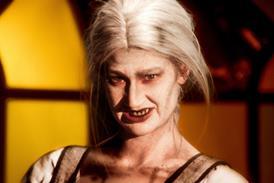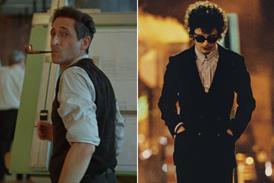The American director reflects on the making of Rango, which recently won top honours at the Annie Awards and is up for an Academy Award.
Corralling awards from the likes of the Critics’ Choice and the Annies with Academy Award, Golden Globe and BAFTA nominations to boot, Rango has been one of the animation hits of the year with critics and audiences – to the tune of over $240m worldwide – alike.
Yet this couldn’t have been further from director Gore Verbinski’s mind when it came to making the tale of a wannabe actor chameleon who winds up in the Wild West town of Dirt. “[I was] shocked to see people still remembered us because we came out in March,” says Verbinski. “We were just trying to do something a little different. It’s nice to get a vote from people saying ‘yeah, do something different’. It’s a kick in your step as you go off to do other things.”
Despite its differences, Rango does have some parallels with other awards-baiters, namely The Artist and Hugo, with a celebration of cinema in its nod to traditional Westerns, even though Verbinski originally started off trying to avoid the “language of the Western”.
“There’s so much of that cinematic language that’s very shop-worn, so first it was sort of how you run away from it. As we were developing the story reel, we moved to this idea that this outsider, this chameleon, was going to be an actor in search of an audience and an identity.
“It started to become self-reflective – the mariachi singing of his demise and commenting on the hero’s journey – then we could run towards all of these references and really celebrate the genre because I think our protagonist is aware of the fact that he’s stumbled into a genre and he’s adapting.”
Adapting is something Verbinski had to do when making Rango as it was his first experience with animation and the director admits that he – along with John Logan and Jim Byrkit who worked on the story for 18 months with Verbinski, before a further 18 months at ILM – didn’t know what he was doing. However, he didn’t believe that he had to abandon techniques he’d developed in live action, just because people were telling him how animation was done.
One such unorthodox method came with the voice acting where Verbinski spent 20 days with actors on a set, interacting with each other instead of recording their voices in an isolation booth. “When I heard we’d need to record the actors one at a time on a microphone, that scared me,” the director admits.
“I need them reacting. Everybody comes to set with a plan or an intention and it’s nice when that slips away because you’re colliding all these intentions together and then they all have to change.”
Verbinski was also keen to make things “flawed” so that the audience could feel the cameraman was on-set shooting these characters. “Maybe there was a flare in the lens, maybe when the dolly’s moving there might be a little bump; we had to fabricate all those little anomalies in order to make it feel like something’s occurring.
“I felt gravity would be pulling us towards a synthetic, perfect plastic world so we were scratching and clawing and trying to move as best as we could in the opposite direction.”
This authenticity was also key when it came to populating the town of Dirt. First ensuring that voice actors fit their roles – Johnny Depp was attached very early on, while Verbinski also uses the example of the gruff Bad Bill which “had to be Ray [Winstone]” – and second, having Dirt full of “singular characters”.
“The Westerns that I loved always had tertiary characters [played by the likes of] Strother Martin, Warren Oates or Harry Dean Stanton in the background as this guy crossing the bar handing a beer to somebody, and I always felt those characters were so rich.
“It’s very important that we had a rabbit with one ear and we never tell you how he lost his ear, it’s just implied. He didn’t exist for the scene, he’s coming from some place and somewhere in his chronology, he lost that ear and that’s just enough to make you feel that they weren’t just brought in for the day to cross the room. They actually have entire stories and this window is our story but all these characters have their own stories.”
Despite this richness of characters and Rango’s success, Verbinski has ruled out the possibility of returning to Dirt for further adventures. “I’d love to do an animated film again, but I’d like to create a completely different world and a completely different set of characters.
“When you don’t know what you’re doing, the days go by faster, they’re more fun and when you have done it before and know what you’re doing, it’s alright you know, it’s an old friend, but you’re not growing is the point.”
Next up instead for Verbinski is the long-awaited The Lone Ranger, marking another collaboration with Johnny Depp for the director, which starts shooting in three weeks in New Mexico and, even though it’s a Western, it couldn’t be “more different” according to Verbinski.
“It’s returning to pesky things like gravity and weather.”






















No comments yet